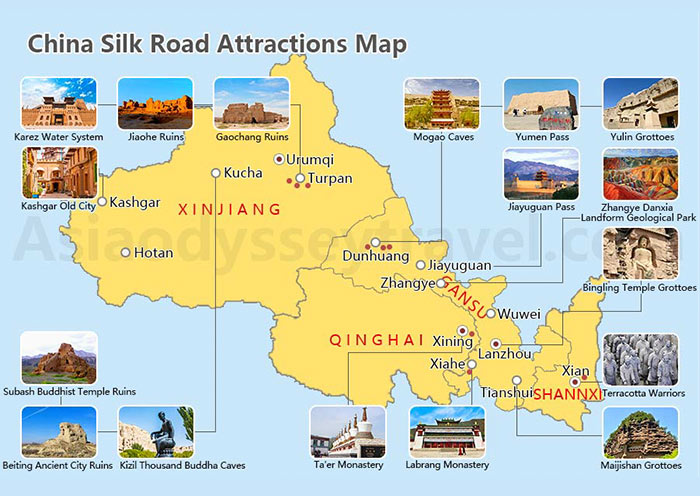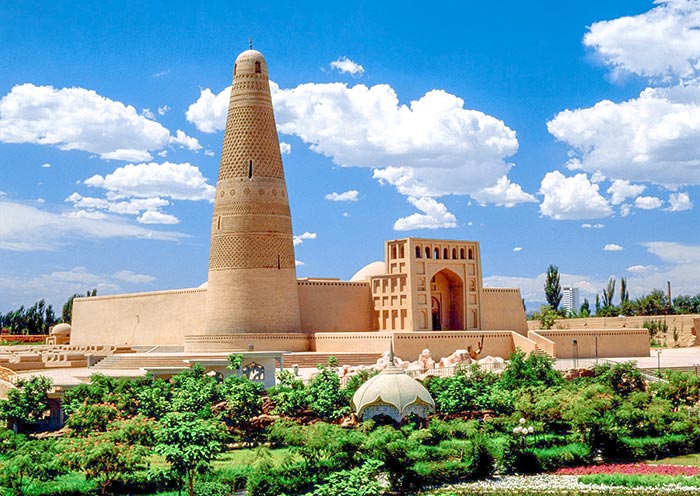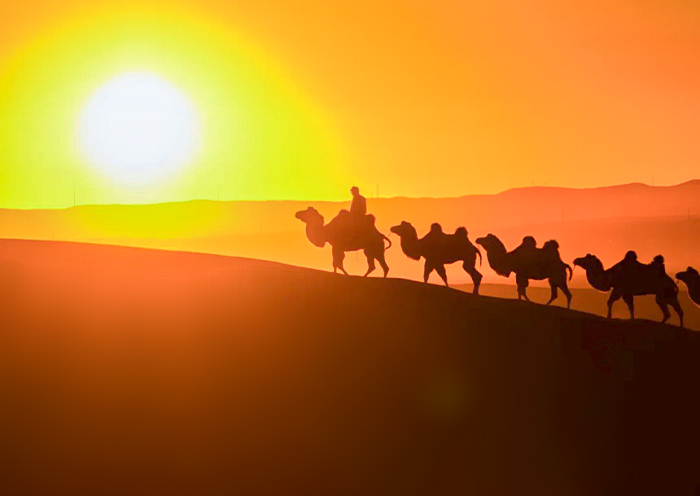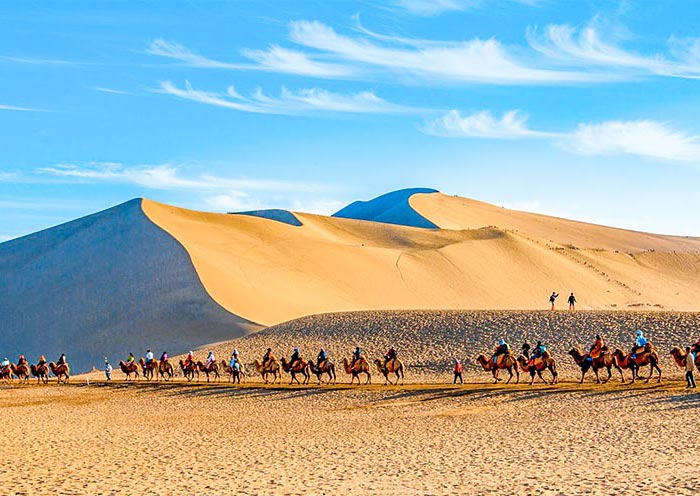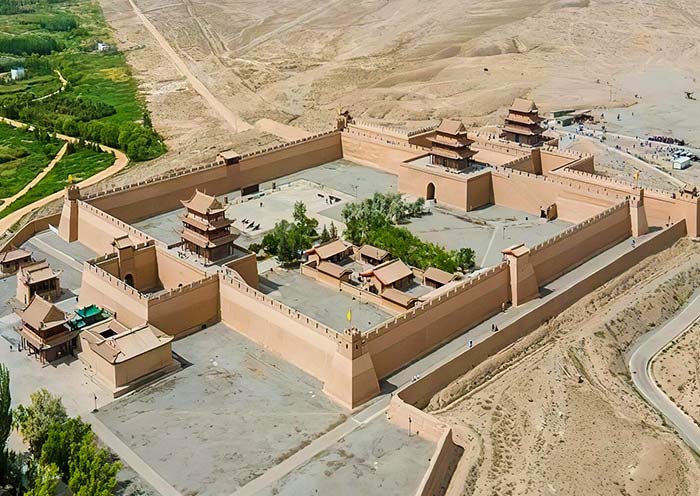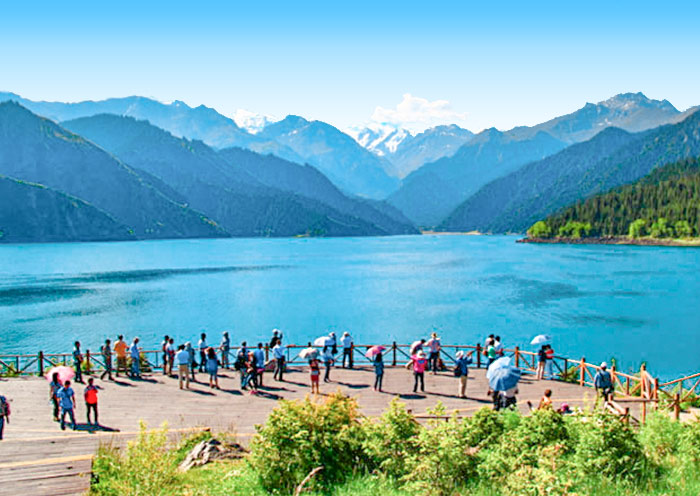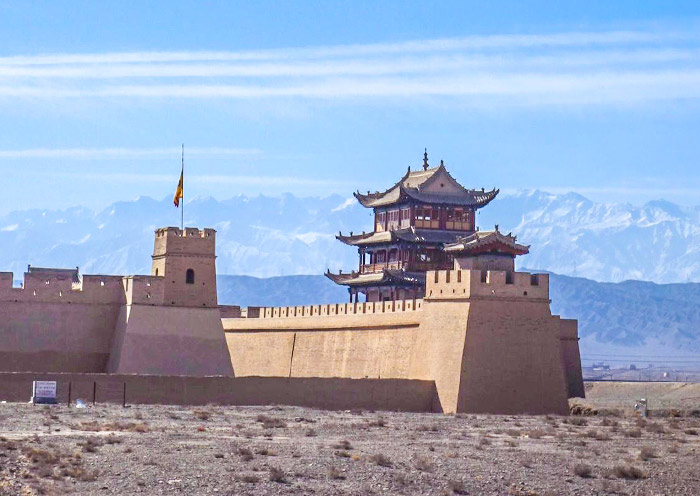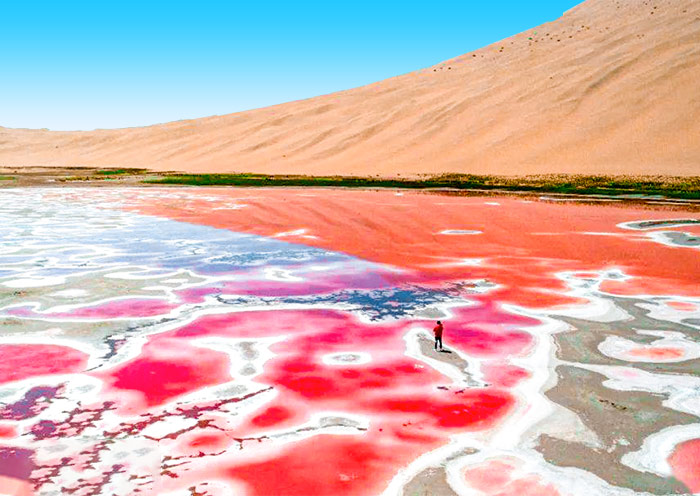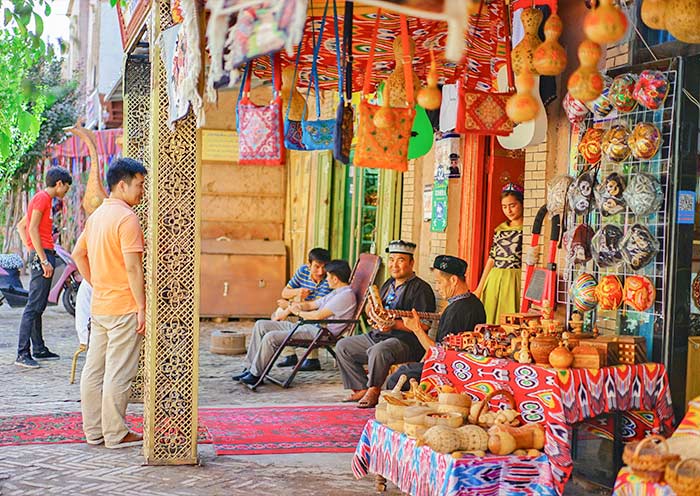1. The Ancient Silk Road Opened 2,100 Years Ago in Han Dynasty by Zhangqian


The Silk Road, a legendary network of trade routes, began over 2,100 years ago during China's Han Dynasty. This remarkable passageway fostered cultural exchange and economic ties between the East and West.
In 202 BCE, Liu Bang established the Han Dynasty, setting the capital in Chang'an (modern-day Xi'an). To stabilize the fledgling empire and counter the persistent threats from the nomadic Xiongnu in the Hexi Corridor and Tianshan regions, Liu Bang adopted a diplomatic approach. The Han court offered silk and arranged marriages to foster peaceful relations.
By 141 BC, the Han Dynasty had grown stronger under the rule of Emperor Wu of Han. Seeking to counter the Xiongnu threat, Emperor Wu dispatched Zhang Qian on multiple missions to the Western Regions (present-day Xinjiang and Central Asia). Zhang Qian's explorations led to diplomatic relations with various Western regions, further facilitating trade and cultural exchange. His missions marked the beginning of the Silk Road, as silk, along with other Chinese goods, started flowing westward, and exotic products from the West found their way into China.
2. The Total Length of Silk Road in China was about 4,000 kilometers (2,485 miles)
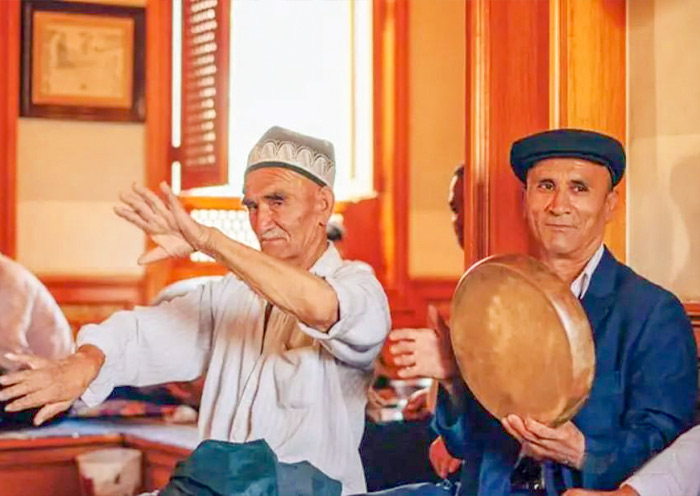
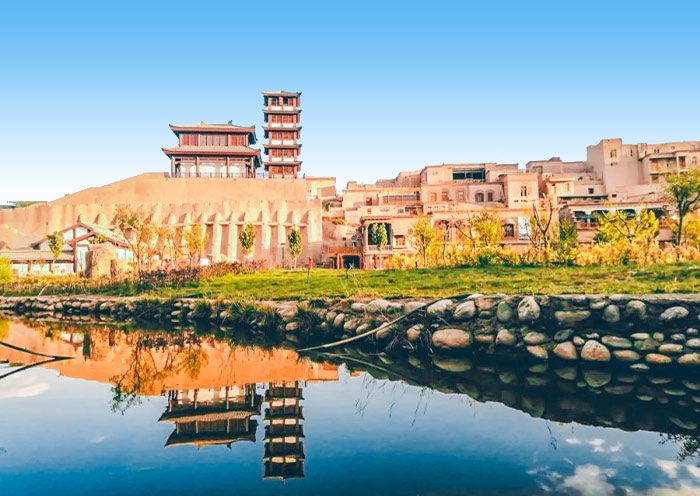
The Silk Road, an iconic trade route, stretched across the vast Eurasian continent. While its total length varies, within China, it spans approximately 4,000 kilometers (2,485 miles) from Xi'an to Kashgar. This main route, despite several branches, was the most significant ancient Silk Road pathway.
Starting in Xi'an, the road winds through key historical cities: Tianshui, Lanzhou, Wuwei, and Zhangye. Travelers then reach Jiayuguan, the westernmost point of the Great Wall, before venturing into the cultural marvel of Dunhuang. Here, the route forks north through the Jade Gate Pass (Yumen Pass) to Turpan, hugging the northern edge of the Taklamakan Desert towards Kashgar.
Alternatively, a southern branch from Dunhuang passes through Yangguan, Ruoqiang, and follows the southern rim of the Taklamakan Desert, reaching Qiemu, Hetian, and finally merging at Kashgar.
This ancient highway was more than a trade route; it was a conduit for cultural exchange, spreading ideas, art, and religion. Traversing the Silk Road in China offers a glimpse into the rich tapestry of history and the enduring legacy of a path that once connected the world.
3. Silk Road Started in Changan (Xi'an), the Capital City of 13 Dynasties


Xi'an, the modern capital of Shaanxi Province, has a rich and storied history. For over 1,000 years, from 1057 BC to 904 AD, it served as the capital of 13 dynasties, making it one of the longest-serving capital cities in Chinese history. It was during the Han Dynasty, with Xi'an as its capital, that the legendary explorer Zhang Qian embarked on his missions to the Western Regions, opening up trade routes that would eventually become known as the Silk Road.
In 2014, UNESCO designated the "Silk Roads: the Routes Network of Chang'an-Tian Shan Corridor" as a World Heritage Site, officially recognizing Xi'an as the starting point of the Silk Road. This ancient city, once a bustling center of commerce and culture, played a pivotal role in connecting China to the rest of the world and fostering exchanges of goods, ideas, and people.
Xi'an's rich history is evident in its numerous well-preserved historical sites. The Terracotta Army, a collection of life-sized terracotta figures of soldiers, horses, and chariots, is one of the most famous archaeological discoveries in the world. Other must-see attractions include the ancient city walls, the towering Big Wild Goose Pagoda, and the magnificent Tang Dynasty-themed park, the Grand Tang Everbright City.
4. 100+ Products Were Traded in Ancient Silk Road
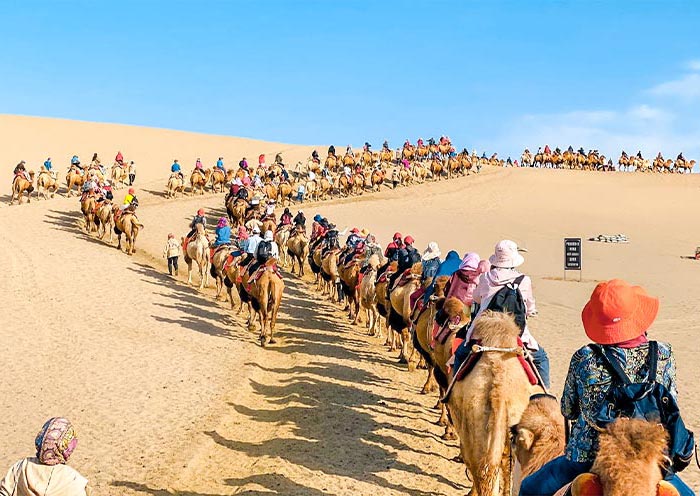
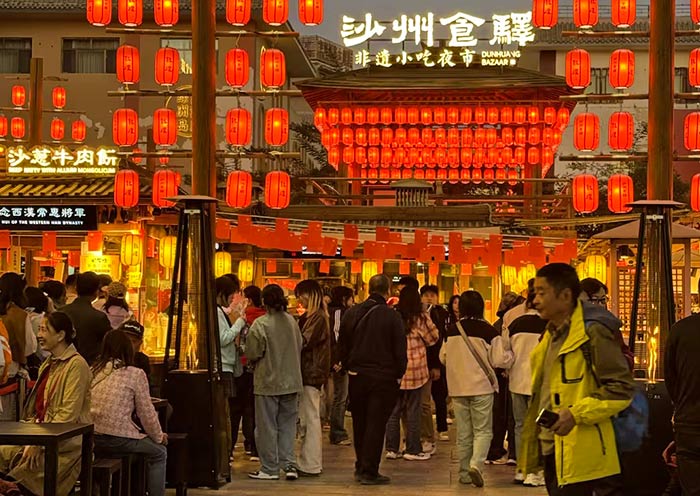
The Ancient Silk Road was a bustling network of trade, originally opened by Zhang Qian to exchange silk and tea for Western warhorses, crucial for defending against invasions. As trade flourished, the variety of goods expanded dramatically.
From East to West, high-value items such as silk, porcelain, tea, paper, and medicines showcased the advanced technologies of the East. In return, the West supplied raw materials like spices, jade, furs, and more.
Beyond these commodities, the Silk Road also facilitated the trade of livestock, including cattle, sheep, and horses, and even slaves. This exchange of living resources was vital for sustaining the diverse needs of civilizations along the route.
Agricultural seeds were another crucial aspect of Silk Road trade. The movement of seeds led to the introduction and cultivation of various crops, vegetables, and fruits across continents, enriching diets and farming practices globally.
Embark on a journey through the Silk Road's legacy and discover the incredible diversity of products that once flowed along this ancient network. Experience the enduring impact of these exchanges on cultures and economies, and let the history of the Silk Road inspire your travels and understanding of global connections.
5. The Han Dynasty Unified 36 Small Countries in the Western Regions to Built China Silk Road

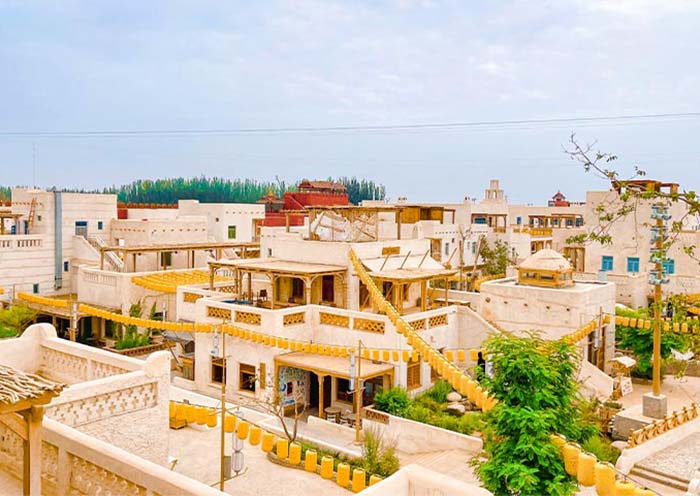
Travel back in time to the Han Dynasty's unification of 36 kingdoms in the Western Regions in 60 BCE, a monumental event that laid the foundation for the legendary Silk Road. This strategic move marked the first inclusion of Xinjiang into Chinese territory, with the establishment of the Protectorate of the Western Regions in Turpan, serving as the political heart of this vast area.
These 36 kingdoms, including notable ones like Wusun, Dayuan, Yuezhi, Kucha, Xiongnu, Ruoqiang, and Loulan, were strategically located around the Tianshan Mountains, Pamir, and the edges of the Taklamakan Desert. As vital nodes on the Silk Road, they played a crucial role in fostering trade and cultural exchange between East and West.
Imagine bustling trade routes where silk, spices, and stories traveled freely, connecting distant lands and diverse cultures. Today, you can explore these ancient pathways and experience the remnants of a vibrant past. Discover the rich history and enduring legacy of the Silk Road, a testament to the Han Dynasty's vision and the spirit of exploration. Let this journey inspire your wanderlust and unveil the timeless allure of the Silk Road.
6. 24 UNESCO World Heritage Sites along China Silk Road
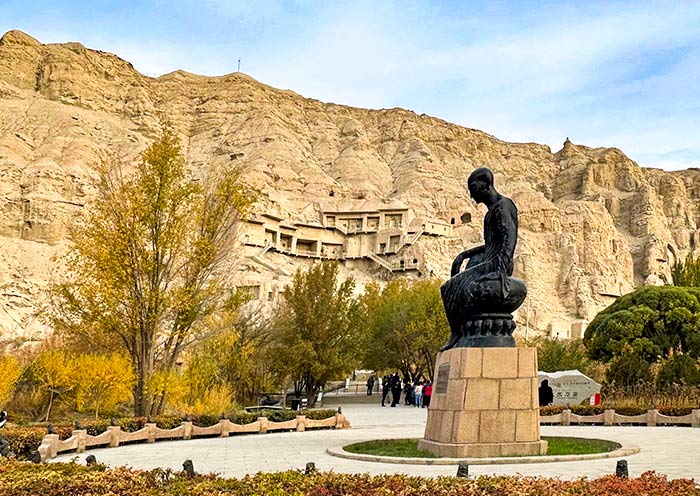
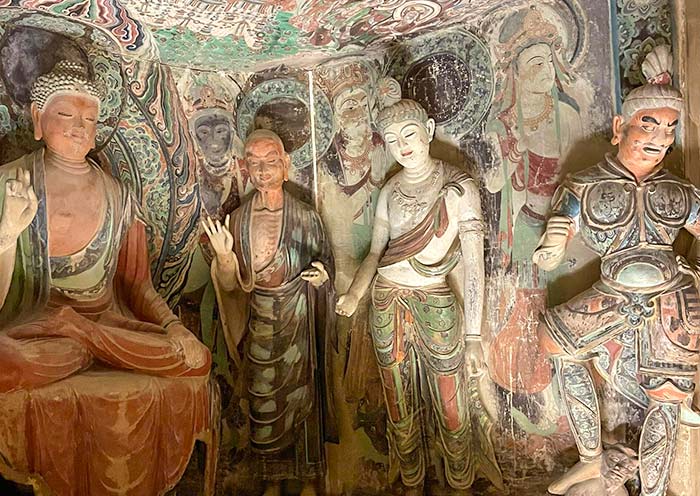
The ancient Silk Road, once a vibrant network of trade routes connecting East and West, has left an indelible mark on the landscapes and cultures of the countries it traversed. In China alone, 22 of the 33 sites included in the UNESCO World Heritage Site "Silk Roads: the Routes Network of Chang'an-Tian Shan Corridor" (a joint nomination with Kazakhstan and Kyrgyzstan) offer a fascinating glimpse into this rich history.
These historical treasures, primarily concentrated in the provinces of Shaanxi, Gansu, and Xinjiang, date back to the 3rd to 6th centuries CE, with their golden age occurring during the Tang Dynasty (7th to 10th centuries CE). While many of the city ruins, battered by centuries of wind and sand, now exist as haunting remnants of their former grandeur, the Buddhist cave temples have weathered time relatively well.
Some of the most iconic sites include:
- Xi'an: As the starting point of the Silk Road, Xi'an boasts several UNESCO-listed sites, including the magnificent Daming Palace, the Big Wild Goose Pagoda, and the Small Wild Goose Pagoda.
- Gansu: This province is a treasure trove of Silk Road heritage. The iconic Yumen Pass, a former frontier fortress, and the majestic Mogao Caves, renowned for their Buddhist art, are must-see destinations. Additionally, the Maiji Mountain Grottoes and Bingling Temple Grottoes are renowned for their intricate sculptures and murals.
- Xinjiang: This autonomous region is home to numerous ancient cities and cave temples. The ruined cities of Gaochang and Jiaohe, once thriving oases on the Silk Road, offer a glimpse into the region's rich history. The Kizil Caves, with their colorful murals, are another highlight. Heavenly Lake of Tianshan, surrounded by snow-capped mountains, was inscribed on the UNESCO World Heritage List in 2013.
7. Hexi Corridor is the Heart of Ancient Silk Road

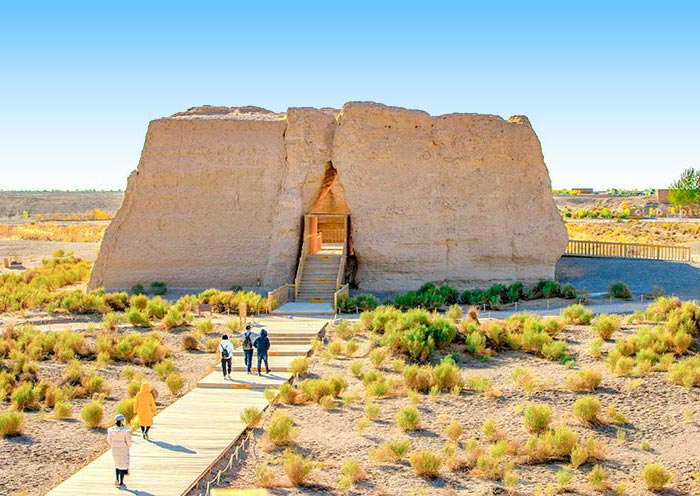
Nestled between the towering Qilian Mountains and the vast Gobi Desert lies the Hexi Corridor, a narrow strip of fertile land that has played a pivotal role in shaping the history of China and Central Asia. This ancient trade route, a crucial link between the Chinese heartland and the West, was the lifeblood of the Silk Road.
The Hexi Corridor's strategic location made it a highly contested region throughout history. Its numerous passes and oases served as vital gateways, connecting civilizations and cultures. The Great Wall, with its iconic forts such as Jiayuguan, Yangguan, and Yumenguan, was built to protect these vital trade routes. These ancient fortifications stand as silent witnesses to the fierce battles that were fought over control of this strategic region.
Beyond its strategic importance, the Hexi Corridor was also a land of stunning natural beauty. Oasis towns, such as Dunhuang, emerged as bustling centers of trade and culture, offering respite to weary travelers. The iconic Mingsha Mountain and Crescent Moon Spring, with its shifting sands and crystal-clear waters, provide a breathtaking backdrop to this historic region.
Today, the Hexi Corridor offers travelers a unique opportunity to explore the remnants of ancient civilizations and experience the raw beauty of the Gobi Desert. From the towering sand dunes of Mingsha Mountain to the ancient city walls of Jiayuguan, there is something to captivate every traveler. Whether you're interested in history, culture, or simply a breathtaking natural landscape, the Hexi Corridor is a destination that should not be missed.
8. Silk Road Witnessed Origin and Prosperity of Buddhism in China
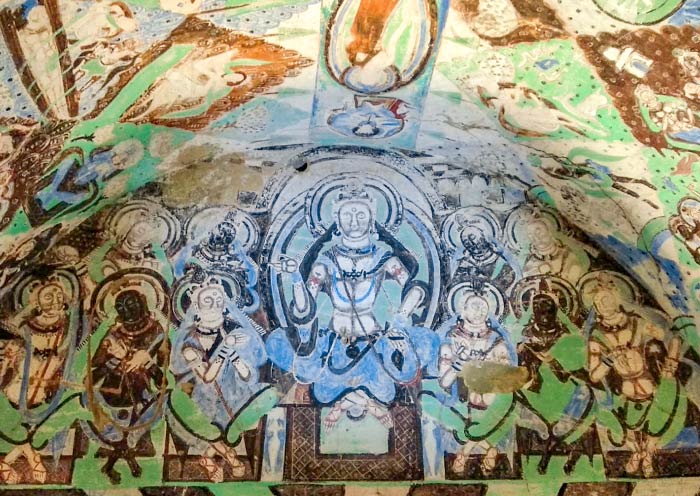
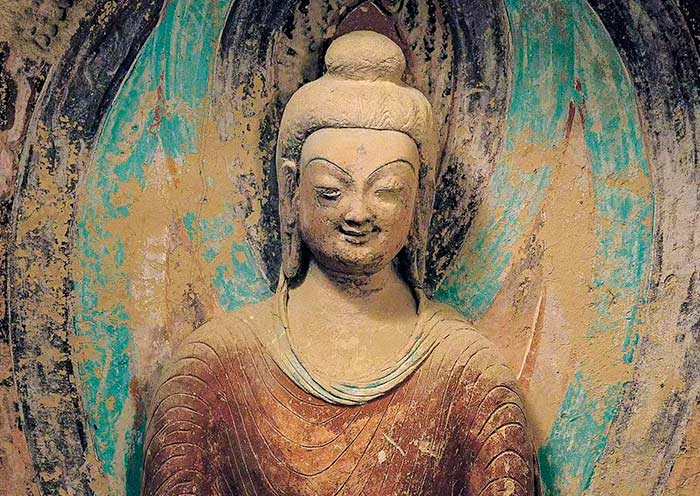
Buddhism, originating in ancient India, made its way to China during the Han Dynasty. Legend has it that the Han Emperor had a dream of a golden deity and subsequently dispatched emissaries to India to seek out this divine being. Upon their return, they brought with them Buddhist scriptures and teachings, marking the beginning of Buddhism in China. While Buddhism faced challenges in gaining widespread acceptance during the Han Dynasty, it gradually took root and began to flourish.
It was during the turbulent period of the Wei, Jin, Southern and Northern Dynasties (3rd to 6th centuries) that Buddhism experienced a significant resurgence in China. The social and political upheavals of this era led many to seek solace and meaning in Buddhism. This period witnessed a proliferation of Buddhist monasteries, the creation of exquisite Buddhist art, and the excavation of countless cave temples, such as the Mogao Caves in Dunhuang.
The Tang Dynasty (618-907 AD) marked the golden age of Buddhism in China. Buddhism was embraced by the imperial court, and Buddhist monasteries and universities became centers of learning and culture. Tang Dynasty monks, such as Xuanzang, made arduous journeys to India to study Buddhism and translate Buddhist scriptures. Their efforts helped to solidify Buddhism's position as one of China's major religions.
The Silk Road played a pivotal role in the transmission and development of Buddhism in China. It was along these ancient trade routes that Buddhist monks, scriptures, and art traveled, shaping the religious landscape of East Asia. Today, the legacy of Buddhism can be seen throughout China, from the towering pagodas of ancient cities to the serene temples nestled amidst stunning natural landscapes.
9. 40+ Buddhist Cave Art Dating Back Thousand Years Still Exist along China Silk Road
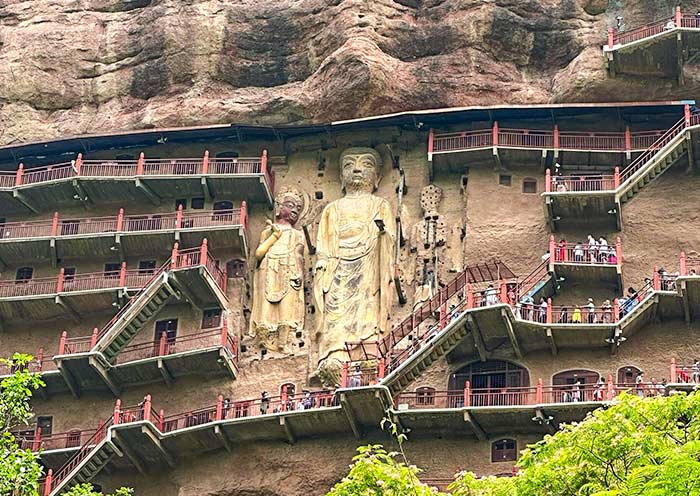
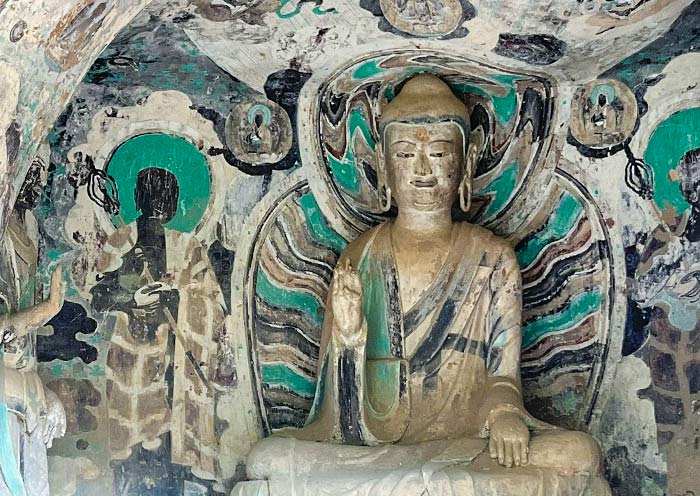
The Buddhist cave art, originating in India, traveled along the Silk Road, first reaching China's Xinjiang and then spreading into Gansu's Hexi Corridor. Over 40 cave complexes, like sparkling jewels, adorn the crescent-shaped Gansu Province. Among the most renowned are:
- Mogao Caves: Located in Dunhuang, these caves house 735 caves with over 45,000 square meters of murals, 2,400 statues, and five wooden pavilions from the Tang and Song dynasties.
- Yulin Caves: Situated 150 kilometers from Mogao Caves, Yulin boasts 41 caves with over 1,000 square meters of murals and 100 statues.
- Mati Si Caves: Located 60 kilometers from Zhangye, this complex comprises over 70 caves.
- Bingling Temple Caves: Situated 130 kilometers from Lanzhou, on the western shore of the Liujiaxia Reservoir, Bingling Temple houses over 260 niches, 694 stone sculptures, 82 clay sculptures, and over 900 square meters of murals. The Tang dynasty sculptures are particularly exquisite.
- Maiji Mountain Grottoes: Located in Tianshui, this complex boasts over 200 caves, nearly 1,300 square meters of murals, and over 7,200 clay sculptures, earning it the title of "Eastern Sculpture Museum."
10. Xinjiang Was the Most Important Stop of Ancient Silk Road
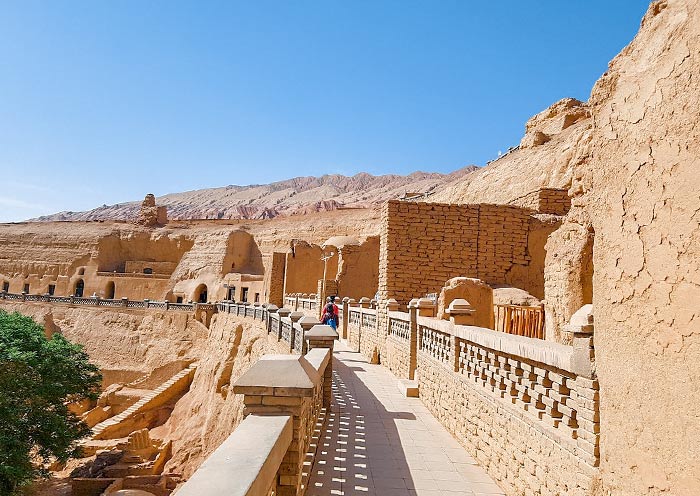
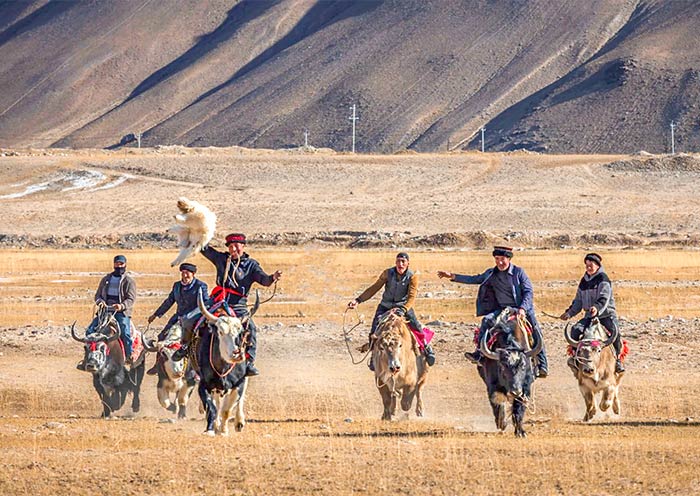
Xinjiang played a pivotal role in the Ancient Silk Road. As a vast region bordering Central Asia, Xinjiang served as a crucial nexus for trade, cultural exchange, and religious diffusion along this historic route.
The Silk Road in Xinjiang splits into northern and southern routes around the majestic Tianshan Mountains. The northern route traverses the lush Ili River Valley, while the southern route skirts the Taklamakan Desert, leading to the vibrant city of Kashgar. Today, these paths are among Xinjiang’s most popular travel routes, offering breathtaking landscapes and cultural riches. Oases nestled within deserts and canyons provided essential water and supplies to ancient caravans, fostering thriving trade cities like Kashgar and Turpan. These cities became bustling centers of commerce and cultural exchange.
Xinjiang’s diverse cultural tapestry, influenced by Persian, Turkic, and Chinese traditions, is a testament to its historical significance. The region introduced both Buddhism and Islam to China, creating a mosaic of ethnicities, cultures, and religions. Today, visitors can explore ancient Buddhist cave temples, ornate mosques, and traditional bazaars, each offering a window into the region's fascinating past.
11. 10+ Ruins of Ancient City Once Prosperous on China Silk Road

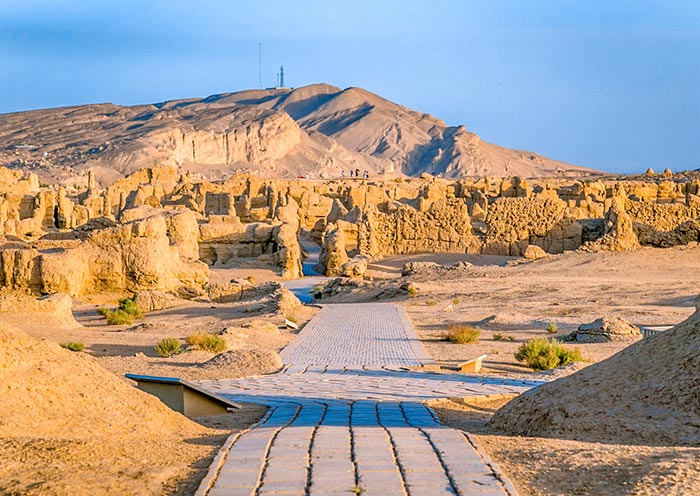
The Silk Road, a historic trade route connecting China to the West, was once a bustling artery of commerce and culture. Along its path, countless cities rose and fell, their fortunes tied to the ebb and flow of trade. Many of these ancient cities, especially those situated near the harsh Taklamakan Desert, were eventually abandoned and reclaimed by the sands. Today, their ruins offer a haunting glimpse into a bygone era.
- Jiaohe Ancient City: Located in Turpan, Jiaohe was the political center of the Western Regions during the Tang Dynasty. It stands as the world’s largest and oldest earthen city and is China’s most well-preserved urban ruin, dating back over 2,000 years.
- Gaochang Ancient City: Situated 40 kilometers from Turpan, Gaochang served as the capital of the Gaochang Kingdom for over 1,400 years. Covering 2.2 million square kilometers, it is one of the largest ancient city ruins.
- Tashkurgan Stone City: Further west, in the Pamir Mountains, lies the Stone City of Tashkurgan. This ancient city was a vital stopping point for caravans traversing the treacherous Pamir Plateau. The city's unique architecture, a blend of Chinese and Central Asian influences, reflects its strategic location on the Silk Road.
- Loulan Ancient City: Once a thriving oasis city, Loulan was mysteriously abandoned in the early centuries AD. The ruins of Loulan, often referred to as the "Pompeii of the Desert," have captivated the imagination of explorers and archaeologists for centuries.
- Kucha Ancient City: The city was renowned for its Buddhist art and music, and its influence extended far beyond Xinjiang. Today, the ruins of Kucha and the nearby Kizil Caves, with their colorful murals, offer a tangible connection to the region's rich cultural heritage.
12. Karez System Brings Benefits to Arid Areas along the Silk Road
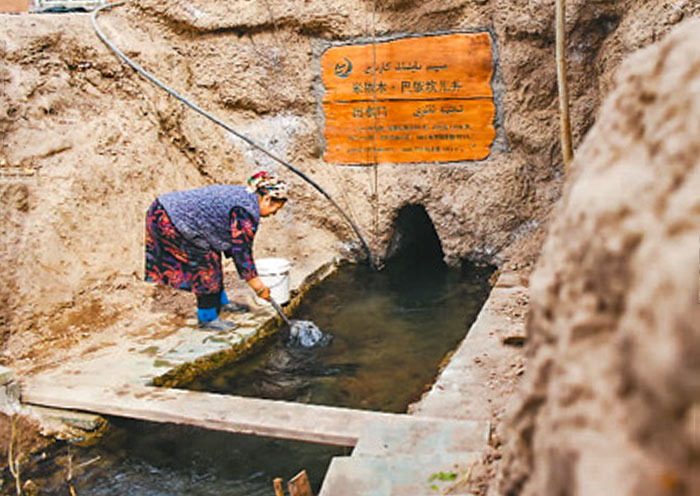

Explore the marvel of the Karez System, an ancient irrigation method that transformed arid regions along the Silk Road. This ingenious system channels underground water to the surface for drinking and irrigation, using a network of vertical wells, underground canals, and open channels.
Found in Xinjiang's Turpan and as far as Iran, the Karez System's origins are still debated. In China, the Karez is celebrated alongside the Great Wall and the Grand Canal as one of the three great ancient engineering feats, with a history spanning over 2,000 years. In Iran, these systems were recognized as a UNESCO World Heritage Site in 2016, highlighting their historical and cultural significance. Regardless of where it began, its spread along the Silk Road led to its widespread use, benefiting countless communities by providing a reliable water source in harsh climates.
Whether you're marveling at the Karez in Turpan or exploring its Iranian counterparts, the system stands as a testament to human ingenuity and the enduring spirit of the Silk Road. Embark on a journey to uncover the secrets of this ancient technology and witness how it continues to sustain life in some of the world's most challenging environments. Your adventure into history and innovation awaits!
13. Christianity and Islam Were Introduced to China through the Silk Road
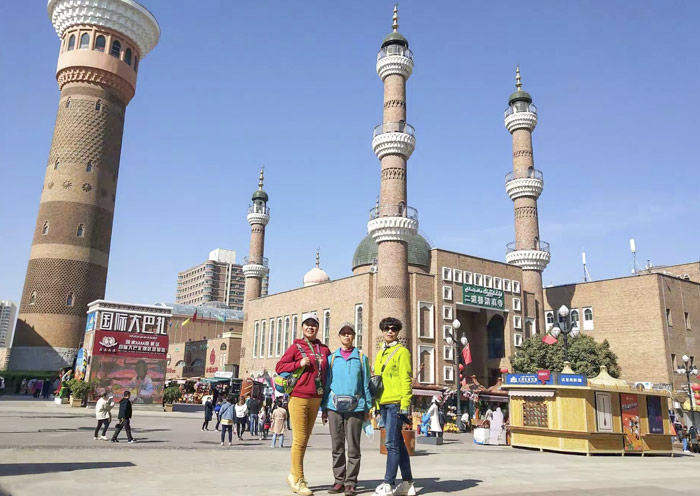
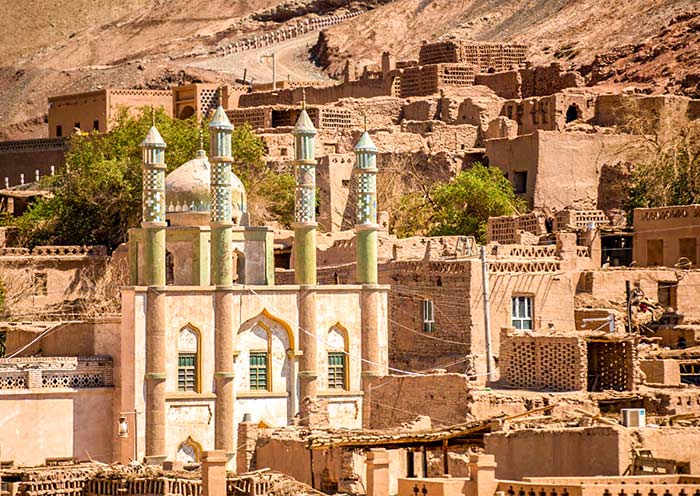
China, a land steeped in ancient traditions, has also been a fascinating crossroads for major world religions. The Silk Road, a network of trade routes stretching from China to the Mediterranean, served as a conduit for the introduction of Christianity and Islam.
Christianity, with its roots in the Middle East, found its way to China as early as the 7th century AD. Nestorian Christians, a branch of Eastern Christianity, established communities in the Tang Dynasty capital of Chang'an. Their legacy can still be seen in the remnants of ancient Christian sites and the enduring faith of small Christian communities that have persisted for centuries.
Islam, too, made its mark on China's spiritual landscape. Muslim traders and pilgrims, hailing from the Arabian Peninsula and beyond, brought their faith to the heart of the Middle Kingdom. Their influence can be observed in the vibrant Islamic architecture, bustling bazaars, and the distinctive culture of Muslim ethnic groups like the Hui and Uyghur.
To explore the fascinating intersection of faith and history, consider a journey along the Silk Road. Visit ancient sites where Christian churches once stood, or immerse yourself in the vibrant Muslim communities of cities like Xi'an or Kashgar.
A journey through China's religious heritage offers a unique opportunity to witness the enduring impact of Christianity and Islam on Chinese culture and society.
14. The Mongol Empire of the Yuan Dynasty was only country that fully controlled the Silk Road Districts
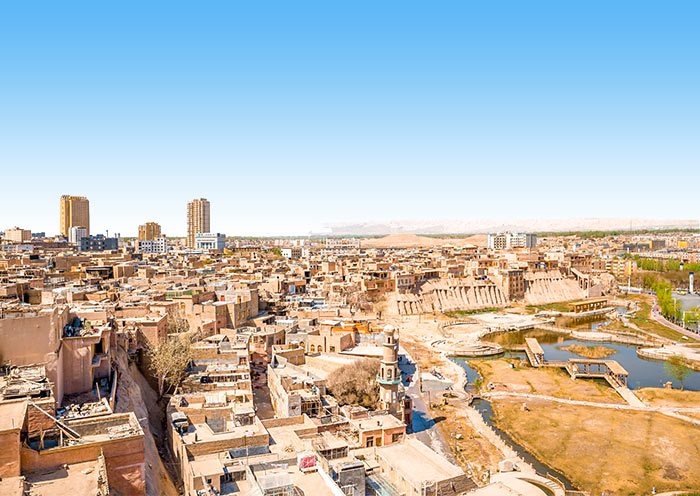
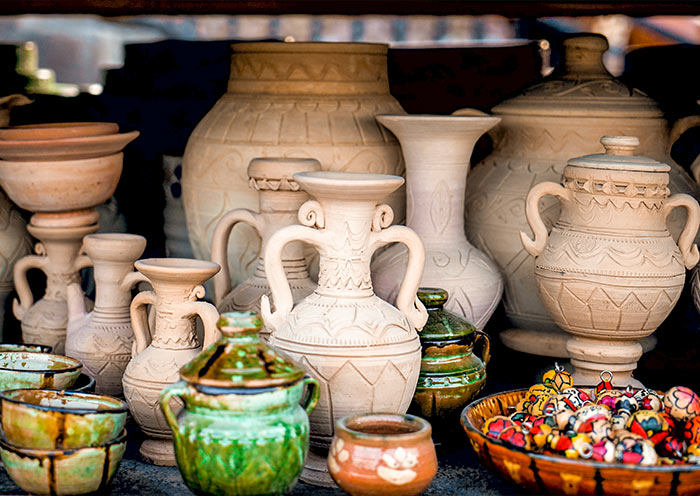
Imagine an era when a vast empire stretched from the Pacific Ocean to Eastern Europe, connecting diverse cultures and facilitating unprecedented trade. This was the reality of the Mongol Empire, which, at its height, controlled the entirety of the Silk Road.
From the 13th to the 14th centuries, the Mongols, under the leadership of Genghis Khan and his successors, conquered vast swathes of Asia. Their empire, which later became known as the Yuan Dynasty in China, was the largest contiguous land empire in history. This immense territory encompassed the entire Silk Road, bringing together people from China, Central Asia, the Middle East, and even Europe.
Under Mongol rule, the Silk Road experienced a renaissance. The once-fragmented trade routes were unified, and the threat of banditry was significantly reduced. This period, known as the Pax Mongolica, or Mongol Peace, saw a surge in trade and cultural exchange. Caravans carrying silk, porcelain, spices, and other valuable goods traveled freely between East and West. Cities along the Silk Road flourished, and travelers like Marco Polo were able to make epic journeys, opening up new worlds to Europeans.
15. Marco Polo Travel to Beijing via Silk Road
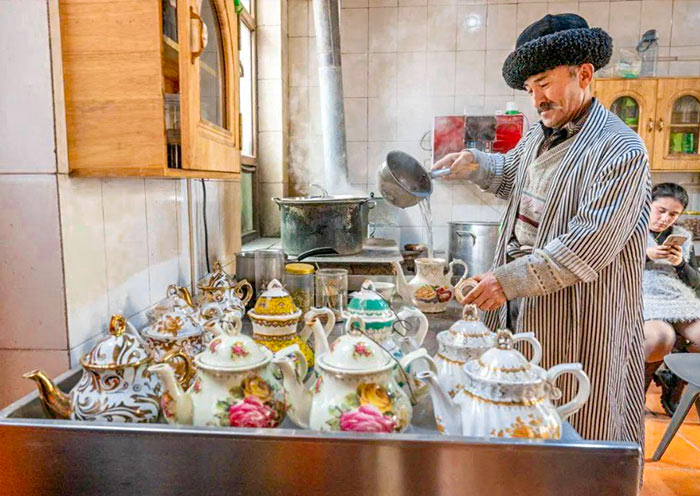
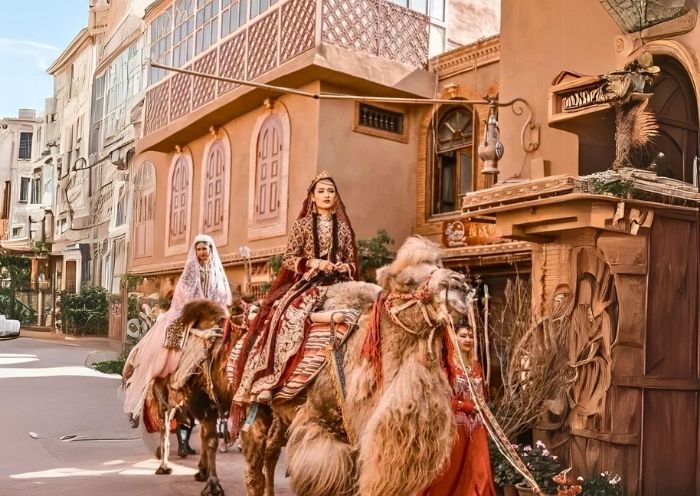
Marco Polo, the famous Venetian explorer, set out on his journey to China with his father and uncle in 1271. They traveled from Venice to the Black Sea and then sailed to Constantinople (modern-day Istanbul). From there, they continued their journey by land through the ancient Silk Road, passing Persia (modern-day Iran) and Central Asia, and finally reaching Beijing, the capital of the Yuan Dynasty in 1275.
Kublai Khan, the emperor of the Yuan Dynasty was impressed by Marco Polo's intellect and sent him on various diplomatic missions and explorations within China. Marco Polo traveled extensively throughout the country, visiting various regions and cities, and documenting his observations and experiences.
In 1295, Marco Polo returned to Venice by boat from Quanzhou through the Maritime Silk Road after over twenty years in the East. He was captured during a conflict between Venice and Genoa and imprisoned. During his imprisonment, he recounted his travels to a cellmate, Rustichello de Pisa, who helped him write his book, "The Travels of Marco Polo." The book was instrumental in introducing the East to the West and sparking European interest in Asian trade and exploration.
16. The "Silk Road" Got Its Name in 1877 from A German


The term "Silk Road" was coined by German geographer Ferdinand von Richthofen in the late 19th century. Richthofen, known for his extensive travels and research in China, was fascinated by the history and culture of the region. He observed the remnants of ancient trade routes and the enduring influence of Chinese silk on global markets.
In his book "China: A Geographical Survey," published in 1877, Richthofen used the term "Seidenstrasse" (Silk Road in German) to describe this network of trade routes that connected China with Central Asia, the Middle East, and Europe. His choice of the term was inspired by the significance of silk as a valuable commodity traded along these routes.
Richthofen's use of the term "Silk Road" quickly gained popularity among scholars and travelers, and it has since become synonymous with the ancient trade routes that facilitated the exchange of goods, ideas, and cultures between East and West.
How to Plan a Trip to China Silk Road?
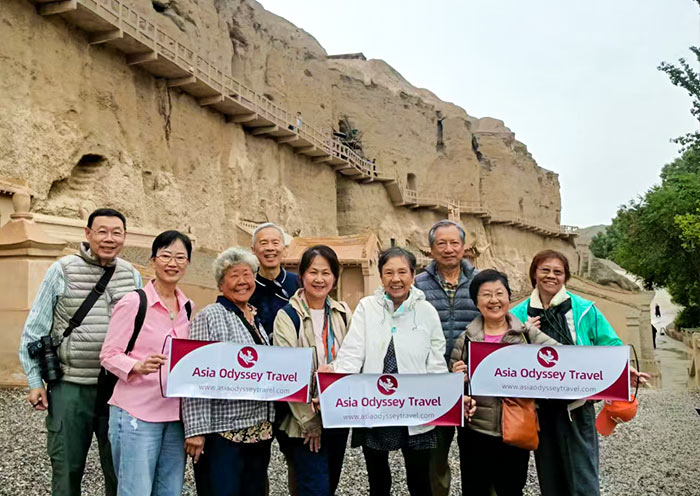
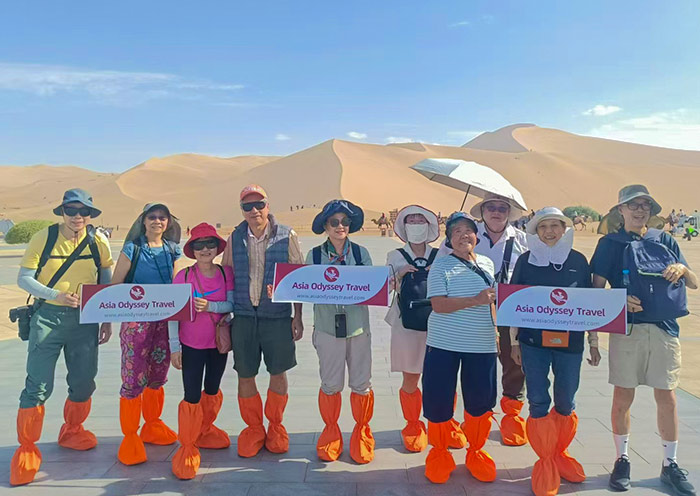
Start your Silk Road journey in Xi'an, where you will spend two days exploring the top attractions of the city. Then take a flight to Dunhuang, where you can spend two days exploring the famous Mogao Caves and around. Finally, you will travel to Turpan in Xinjiang with high-speed train from Dunhuang. Spend over 5 days traveling to Turpan, Urumqi and Kashgar. Here is the detailded itinerary:
- Day 1: Arrival in Xi'an.
- Day 2-3: Explore Xi'an's highlights including the Terracotta Warriors, Bell Tower, Muslim Quarter, Ancient City Wall, and more.
- Day 4: Fly to Dunhuang and visit the Mingsha Shan and Crescent Moon Spring.
- Day 5: Discover the UNESCO-listed Mogao Caves in Dunhuang before taking a high-speed train to Turpan.
- Day 6: Tour Turpan's Jiaohe Ancient City Ruins, Karez Water System, and Emin Minaret before driving to Urumqi.
- Day 7: Visit Tianchi Lake near Urumqi for breakfast and lunch before returning to the city.
- Day 8: Fly to Kashgar to explore the Old City, including Id Kah Mosque and the unique Livestock Market (open on Sundays).
- Day 9: Journey from Kashgar to Karakul Lake to experience the stunning Pamir Plateau and natural wonders.
- Day 10: Conclude your trip in Kashgar before departing for your next destination.
Travel with Asia Odyssey Travel (AOT) to Explore Silk Road
Travel the historic Silk Road with Asia Odyssey Travel (AOT) and delve into the rich tapestry of cultures and landscapes that shaped the path of trade and civilization. With our deep expertise and over a decade of experience crafting journeys throughout this legendary route, AOT offers tailored tour packages that cater to a wide range of interests and preferences.
Tour Packages: Silk Road Tours, Silk Road Group Tours, China Silk Road Tours, China Northwest Tours, Xinjiang Silk Road Tours
Silk Road Destinations: Xi’an, Lanzhou, Zhangye, Jiayuguan, Dunhuang, Turpan, Urumqi, Kashgar
Popular Attractions: Mogao Caves, Hexi Corridor, Kashgar Old City, Karez System, Tianshan Tianchi, Jiaohe Ruins, Kanas Lake, Qinghai Lake, Chaka Salt Lake, Badain Jaran Desert
Silk Road Travel: Silk Road Travel Guide, Silk Road Cities, Silk Road Trip Planning Guide, Silk Road Itinerary, Silk Road Attractions, Silk Road Map, Silk Road Facts
